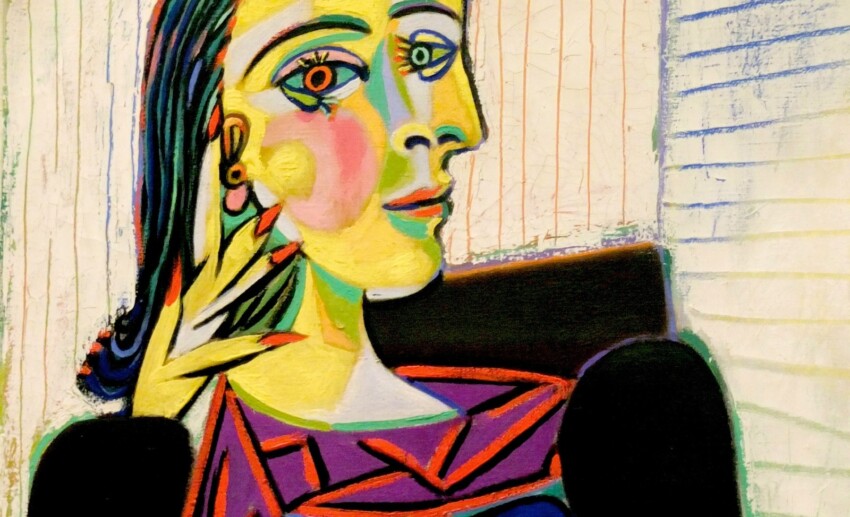
TheHotel Salé, a large and elegant 17th century palace, houses the Picasso Museum.
The museum traces the entire artistic career of Pablo Picasso, including the blue, pink and cubist periods, through the collected works: 5000 works divided between paintings, ceramics, sculptures and engravings.
The collection is organised in chronological order but please note that some works are often loaned for touring exhibitions around Europe.
This magnificent collection was donated to the French State by the great artist’s daughter as payment for the considerable inheritance tax. In fact, there is a law in France that allows heirs to pay inheritance taxes with works of art instead of money, as art is considered to be a fundamental factor in the cultural development of the country. This form of payment is called ‘dation’.

This wonderful museum dedicated to Pablo Picasso is housed in the Hôtel Salé, an elegant aristocratic building in the Marais district. It is a hôtel particulier, a specific type of French building that has the characteristics of a multi-storey villa, but in the heart of the city.
This stately mansion was built between 1656 and 1659 by Pierre Aubert de Fontenay, a wealthy financier originally from Tours in the Loire Valley, to the design of the young architect Jean Boullier. Pierre Aubert, councillor and secretary to the king, later became a royal collector of the salt tax: his position decreed the nickname of this marvellous villa, better known as the Hotel Salé.
In 1976, architect Roland Simounet was chosen to create a museum within this restored historic palace, bringing together the world of Pablo Picasso through a harmony of art and architecture.

The Picasso Museum houses more than 5,000 works by Pablo Picasso, a unique collection in the world in terms of quality, variety and diversity. In fact, in addition to the paintings of the undisputed genius of 20th century art, the museum also offers the opportunity to admire sculptures and engravings and to get to know his creative world through sketches, studies, sketches, photographs, illustrated books and films.
Added to this immense collection is his personal collection of incredible works from other continents such as African and Oceanic masks, along with canvases by great artists such as Corot, Cézanne, Gauguin, Matisse, , Renoir, Braque, Modigliani, Miro, Degas, De Chirico and Giacometti.
If you are short of time, we have collected for you the works not to be missed.
In a dual atmosphere of social ascendancy and new family life, Picasso painted a portrait of his son, disguised as a Harlequin. The figure of Harlequin, derived from the Italian theatrical genre of Commedia dell’Arte, allows him to portray a multifaceted individual with a complex personality.
In fact, Harlequin, dressed in his multifaceted costume, was for various artists of the 1920s, an ideal character to explain potential mood swings or psychological states.
Between May and August 1906, Picasso stayed in Gósol, a small village in Upper Catalonia, accessible only by mule. A singular encounter then took place between his work and the grandiose landscape of this ageless region, preserved by industrial modernity.
The works produced during this stay are at the crossroads of two worlds and mark a passage with no return. This delicate representation is imbued with the ochre melancholy of the great circus wanderings, of which the truncated drum motif remains here, a symbolic vestige of the era of the acrobats.
Presenting a close-up of the faces of the two characters, the creamy white pictorial material crossed by black lines entangles the two heads and gives this ‘kiss’ a strong sexual connotation. However, the dense black eyes, common to Picasso, are empty and unseeing, and if the woman appears to be lying down, the man is placed upright.
The fusion of plastic, tangled lines, referring to sexual union and enjoyment, goes hand in hand with great tension: Picasso captures the ultimate point of the kiss, the climax before the separation of the bodies.
In the summer of 1922, Picasso and his family spent time in Dinard, a fashionable seaside resort, renowned for its sports and therapeutic establishments. Thanks to its particularly mild microclimate, wealthy aristocrats flocked there to enjoy various activities: bathing, golf, tennis and other recreational activities were practised in an atmosphere of relaxation and worldliness.
It was in this stimulating environment that Picasso created one of the most emblematic works of his life, in a period of return to antiquity and Mannerism.
The Picasso Museum is located in the heart of the Marais district and can be reached by public transport.
City Card allow you to save on public transport and / or on the entrances to the main tourist attractions.
